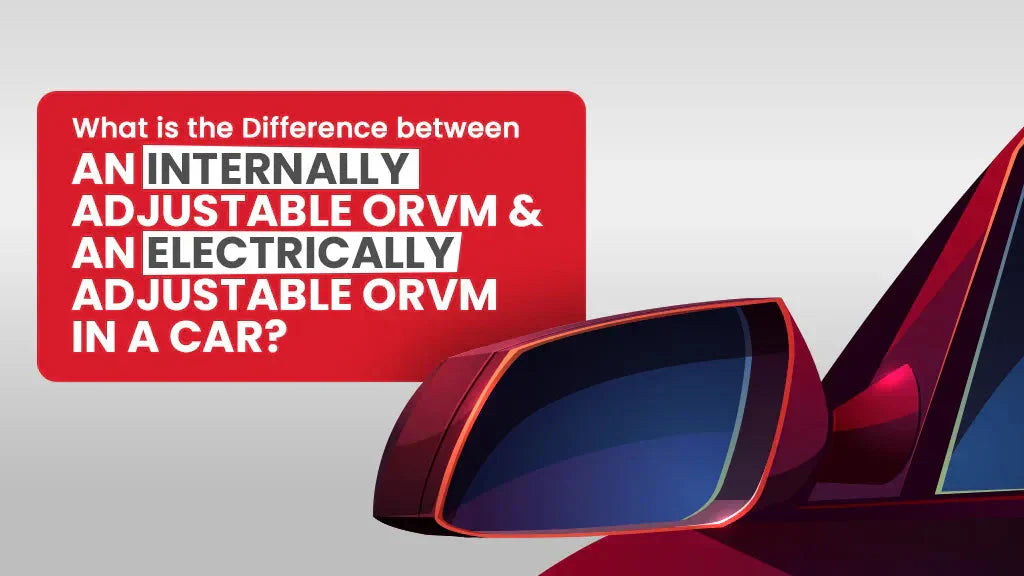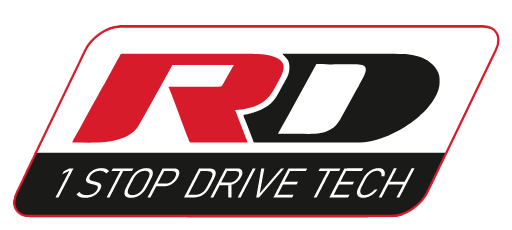
What is the Difference Between an Internally Adjustable ORVM and an Electrically Adjustable ORVM in a Car?
When we think about safety and convenience in a vehicle, side mirrors — more formally known as ORVMs (Outside Rear View Mirrors) — play a crucial role. But like many components in a modern vehicle, ORVMs have also evolved over the decades. Today, the most common variants found in the market are Internally Adjustable ORVMs and Electrically Adjustable ORVMs.
Understanding the difference between these two types of ORVMs not only helps in making an informed decision while purchasing a car but also becomes essential for aftermarket enhancements or repairs.
What is an ORVM in a Car?
An ORVM in a car is designed to help drivers view the areas behind and to the side of their vehicle, especially the blind spots, without turning their head. They are a legal requirement in most countries and significantly contribute to road safety.
Internally Adjustable ORVMs – Definition and Functionality
Internally Adjustable ORVMs are mirrors that can be manually adjusted from inside the car, usually using a lever or joystick-style controller mounted on the door panel. These do not require the driver to roll down the window, unlike the basic externally adjustable mirrors of older cars.
Key Characteristics:
-
Manual control via a lever or stick inside the cabin.
-
No electric wiring or motor involved.
-
Adjustment is typically limited to horizontal and vertical axes.
-
Prone to wear and tear over time, especially at the adjustment mechanism.
Advantages:
-
Cost-effective.
-
Easy to repair.
-
Less prone to electrical failure.
Limitations:
-
Inconvenient for frequent adjustments, especially when different people drive the car.
-
Limited flexibility and precision.
-
Cannot be folded automatically.
Electrically Adjustable ORVMs – Definition and Functionality
Electrically Adjustable ORVMs are equipped with small motors and actuators that allow the mirror’s position to be adjusted electronically using a switch on the driver’s side door or dashboard. These ORVMs are increasingly common in modern cars, even in entry-level hatchbacks.
Some models also feature electrically foldable ORVMs and heated ORVMs, making them useful in extreme weather conditions.
Key Characteristics:
-
Mirror adjustment via electrical switches.
-
Integrated motors are controlled through an ORVM relay and circuit.
-
Often combined with memory functions and auto-folding features.
Advantages:
-
Enhanced driver convenience and comfort.
-
Precision adjustment.
-
It can be integrated with memory settings in high-end cars.
-
Often synchronized with the car lock/unlock system.
Limitations:
-
More expensive to manufacture and replace.
-
Relies on power supply and relays – susceptible to electrical issues.
-
Repairs require technical expertise.
How Does an ORVM Relay Work?
An ORVM relay is a part of the car's electronic circuit that regulates the flow of current to the ORVM's motors. It plays a crucial role in executing commands like mirror adjustment or folding. A malfunctioning relay can result in the mirrors failing to respond or move erratically.
Comparative Table: Internally Adjustable vs Electrically Adjustable ORVM

Market Trends: Growing Adoption of Electrically Adjustable ORVMs
A 2023 report from the Indian Automobile Components Manufacturers Association (ACMA) revealed the following data regarding the adoption of ORVM technologies:
-
Electrically adjustable ORVMs are now factory-installed in over 72% of all new passenger cars in India.
-
Internally adjustable ORVMs are mostly found in cars priced under ₹6 lakh, and make up just 18% of the new vehicle market.
- The remaining 10% is made up of basic manually adjustable ORVMs and hybrid configurations (manual fold + electric adjust).
This data highlights a clear shift in consumer preference toward more advanced and feature-rich ORVMs. With the expansion of affordable electric components and increased customer expectations, the industry is leaning towards complete electrification, including folding and memory features.
Safety Implications
For Internally Adjustable ORVMs:
-
Requires manual adjustment, which might distract the driver if done while driving.
-
Improperly adjusted mirrors can lead to blind spots, increasing the risk of accidents.
For Electrically Adjustable ORVMs:
-
Quick and safe to adjust even while driving.
-
Reduces human error with precise angles.
-
Advanced versions can auto-adjust based on reverse gear input or memory settings for different drivers.
Cost Comparison: Aftermarket Installation & Repairs
Here’s a data-based overview of cost differences (based on 2024 data from top Indian auto spare part suppliers):

When to Upgrade Your ORVM
If you own an older car or an entry-level model with internally adjustable ORVMs, consider the following situations for an upgrade:
-
Frequent driver changes: Electrically adjustable ORVMs offer quick adjustments for multiple drivers.
-
Urban driving with tight parking spaces: Electrically foldable mirrors help avoid accidental damage.
-
Long drives or night travel: Better mirror control enhances safety and comfort.
Conclusion
Both internally adjustable ORVMs and electrically adjustable ORVMs have their place depending on the driver’s needs, vehicle model, and budget. While the former offers simplicity and lower costs, the latter brings comfort, safety, and future-ready features,at a slightly higher investment.
As the auto industry moves toward connected and intelligent vehicles, electrically adjustable ORVMs with integrated ORVM relays and smart controls are poised to become the default standard.
Whether you are buying a new car, upgrading your current one, or simply understanding your vehicle better, knowing your ORVM options ensures you stay safer and more comfortable on the road.





